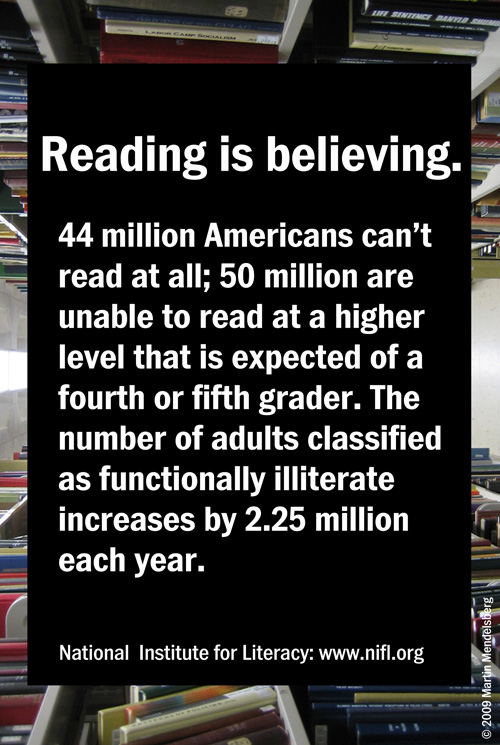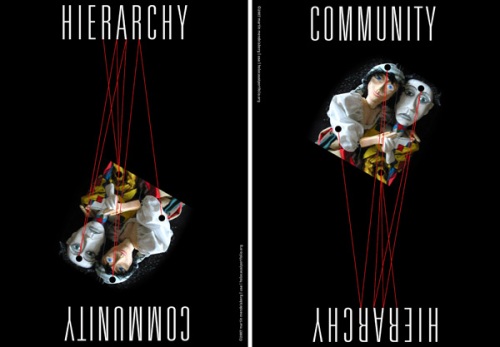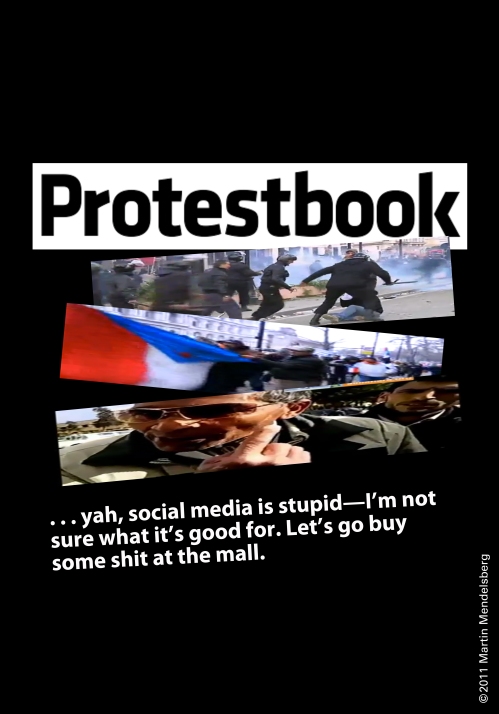MIKE ZUCKERBERG just announced Facebook has one billion active users. Really? What does this monumental milestone actually signify? How does one prove there are one billion active viewers? One thing is certain, there should be more than a trillion targeted marketing messages and advertisements populating Facebook sites. Facebook’s public offering six months ago opened at $38 per share and is still sinking into a faceless abyss. A few years ago I was totally dialed into the power of social media—I reminded students, “If you’re not on Facebook, you don’t exist.” The incessant flood of advertising is impacting the hyper-technical millennials who are looking for places to call their own. One begins to imagine what happens after Facebook? Perhaps the socially positive aspects of Facebook such as, political freedoms, humanistic needs, community safety and overall physical well-being will find a new digital paradigm with one billion active users.
Posts Tagged 'posters'
Is Facebook sinking into a faceless abyss?
Published October 6, 2012 Uncategorized 6 CommentsTags: culture, posters, social networks, twitter
Protestbook
Published February 23, 2011 Uncategorized 3 CommentsTags: martin mendelsberg, middle east, posters, protest, social media, understanding media
FACEBOOK continues to raise contentious arguments at dinner parties and new client meetings. Three years ago I stated “If you’re not on Facebook you don’t exist.” I believe this even more today. True, a myriad of trivial and useless information abounds but recent events in the Middle East demonstrate the significance of social media in an age of increasing discontent. Facebook is simply a tool for communication, when used strategically it provides life-saving information, educational advancements, cultural enrichment, and in so many instances, emotional connections. Visionary organizations and businesses understand how to set sharp-focus customer targets. The Facebook profile settings should be carefully considered and updated, they provide direct connections between customers, services and products. Marshall McLuhan coined the terms, global village, and the medium is the message back in the 1960s, today Facebook and Twitter are the messengers in the 21st century. Aficionados of communications theory should read his groundbreaking book, Understanding Media.
Is this a cliché?
Published May 7, 2010 Uncategorized Leave a CommentTags: design, eye, graphic play, graphics, humor, posters, wit
AFTER MORE THAN THREE MONTHS of intense work it is time to relax and consider a recent epiphany discovered while crawling around in a used book shop in Minneapolis. The juxtaposition of one book jacket with a picture of an eye partially covering another book with the word, design immediately sparked the idea of creating a rebus. After clearly picturing a solution and producing the first image it was time to stop and ask if this little exercise was really just foolish. The more important question, How many times have we seen this before? In the process of searching for the same solution produced by someone else one finds eye wear companies, blogs, more book titles and of course, Eye: The International Review of Graphic Design. The question of originality looms in the background but the point of this exercise was the surrealistic encounter of two books destined for graphic play.
We Remember
Published April 12, 2010 1 2 CommentsTags: genocide, holocaust, posters, remembrance, Talmud, Yom HaShoah
WE REMEMBER this day, Yom HaShoah, Holocaust Remembrance Day. Not really a day but more accurately endless days of inhumanity, suffering and loss. Sixty five years have passed since the Nazi terror but I count myself fortunate to know survivors who are the eternal flames for all of us. Genocide takes place in Africa as I type these words. When will positive deeds and actions overtake the necessity for remembering the horrors of yesterday? The Talmud states—To save one life is to have saved the entire world. Light a candle this evening to remember those who perished and also kindle the warmth of positive actions from this night forward.
Posters: the Bread of the Earth
Published March 27, 2010 1 2 CommentsTags: designful company, Mendelsberg, posters, Rene Wanner
THE DESIGNFUL COMPANY by Marty Neumeier is a compelling study of 21st century concepts of innovation, design management and business ethics. His third book is a manifesto on building a company based upon the pillars of vision, culture, and innovation. However he uses “posters and toasters” as part of a larger metaphor for 20th century design thinking. Most companies generate a steady stream of quotidian design materials—products, print communications, websites, signage, retail environments, packaging, trade show exhibits, advertising manuals, financial reports—the “toasters and posters” of the 20th century. While it’s true successful organizations and businesses in order to succeed must embrace sustainable thinking from the inside out it is also true that poster art remains a timeless medium for purposes of political incitement, biting wit and a proving ground for the power of metaphors. Literate artists and designers know poster luminaries such as John Heartfield, Hannah Hoch, AM Cassandre, Ben Shahn, and in Israel, Yossi Lemel. Posters are not afterthoughts from a century passed—they are the bread of the earth. Aficionados and anyone else with an interest in large-scale graphic expression should study the largest poster archive in digital space: Rene Wanner’s Poster Page.
Reading is believing
Published October 20, 2009 1 2 CommentsTags: children, comprehension, illiteracy, parents, posters, reading

WE DO KNOW READING is not always believing but knowing how to read empowers the individual to make critical decisions, change behaviors and inspire the imagination. With a population that is becoming increasingly illiterate, symbols, signs and other forms of visual communication are meaningless. The arts address metaphor, analogy, simile, irony and wit but these offer no context for those who cannot read. Reading helps in mental development and is known to stimulate the muscles of the eyes. Reading is an activity that involves greater levels of concentration and adds to the conversational skills of the reader. It is an indulgence that enhances the knowledge acquired, consistently. The act of training young children to read is a celebratory experience, sensitive parents who interact with their children transform reading into an emotional and intellectual experience. Reading is a constructive act, John Berger said, When we read a story, we inhabit it. The covers of the book are like a roof and four walls. What is to happen next will take place within the four walls of the story. And this is possible because the story’s voice makes everything its own. Learn more: National Institute for Literacy
Hierarchy and Community
Published August 2, 2009 1 Leave a CommentTags: business, community, education, heirarchy, posters, tribes

HIERARCHY AND COMMUNITY is a set of posters questioning relationships between hierarchical structures in businesses, organizations and educational institutions. Most of us are more comfortable and productive in settings that nurture individual voices, talents and skills. Healthy organizations understand and acknowledge that good ideas come from anyone within the company. In academic settings the same is true, vibrant classrooms exhibit intense interaction between teachers and students. Of course easier said than done. Experience teaches me that productive learning environments empower student-centered teams engaged with problems that directly impact their later professional practice. Best business practices also nurture and empower problem-solving teams. Notice the posters above, hierarchy is the dominating idea even the sound of the word is angular and interrupted. Once a community is destroyed due to economic, political, or personality conflicts any rebuilding process is almost impossible. The puppets on the right have been propped up but look far more distressed. The lesson here, work everyday to preserve a sense of well-being and community no matter where you are. Seth Godin’s book, Tribes is a small jewel illuninating leadership and healthy communities.




